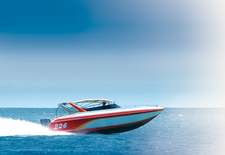An up-to-date look at free software and its makers
Projects on the Move

© Kirill Zdorov, Fotolia
We take a closer look at photo stitching, a photo gallery application, an audio player, and video-recording software. for a more complete summary of the article.
In the age of digital cameras, most people are capable of taking reasonable photos. To make an impression with photos, you have to do something really special. Stitching is one option, but this has nothing to do with traditional handicrafts. These days, stitching means piecing individual photos together to create a large-scale panoramic image.
Now that high-quality digital cameras are affordable and pocket-sized, photo stitching is becoming increasingly popular. A good camera is no guarantee of a usable photographic panorama – you need some software to help piece individual images together in, for example, GIMP. The community has a solution for this problem, and its popularity is growing to keep pace with the popularity of stitching.
Hugin
Hugin is a program for photo stitching on Linux and other Unix-style operating systems [1]. The authors call their software a "simple collection of tools for creating panorama photos." Hugin comprises three smaller tools that live behind a clear-cut and functional interface.
Assuming you have the right kind of original image material, Hugin supports simple drag-and-drop-based stitching. Photos for stitching must be part of a larger panoramic image, and they must overlap at the edges.
To improve the fit of the individual sections, the use of a tripod is a good idea. After loading the photos you want to stitch, you need to define reference points that Hugin will use to join the photos (Figure 1). In next to no time, you have a panoramic image.
 Figure 1: In Hugin, users draw circles around reference points to stitch images together for a perfect fit.
Figure 1: In Hugin, users draw circles around reference points to stitch images together for a perfect fit.
Gallery 2
Online photo galleries – with panoramic photos or simple snapshots – keep popping up on the Internet like mushrooms out of the ground. The most widespread software solution is Menaltos Gallery 2 [2]. In the past, the PHP-based software was vulnerable to all kinds of security bugs, in part because it suffers from functional overload.
The online setup – with no fewer than 10 configuration steps – is a clumsy piece of work and unnecessary if you just want to publish a couple of photos on a website.
Bpgallery
With the Gallery 2 problems in mind, Brett Parker created a shell script as an alternative to the many heavyweight gallery applications. Users can set a couple of environmental variables, such as the width of the HTML page, and pass the photo folder in to the script as a command-line argument.
The solution, known as Bpgallery [3], can't hope to compete with the functionality of Gallery 2; on the other hand, it doesn't need PHP support or a database. Bpgallery simply creates a static HTML page that you can then upload to the server.
Buy this article as PDF
(incl. VAT)
Buy Linux Magazine
Subscribe to our Linux Newsletters
Find Linux and Open Source Jobs
Subscribe to our ADMIN Newsletters
Support Our Work
Linux Magazine content is made possible with support from readers like you. Please consider contributing when you’ve found an article to be beneficial.

News
-
TUXEDO Computers Unveils Linux Laptop Featuring AMD Ryzen CPU
This latest release is the first laptop to include the new CPU from Ryzen and Linux preinstalled.
-
XZ Gets the All-Clear
The back door xz vulnerability has been officially reverted for Fedora 40 and versions 38 and 39 were never affected.
-
Canonical Collaborates with Qualcomm on New Venture
This new joint effort is geared toward bringing Ubuntu and Ubuntu Core to Qualcomm-powered devices.
-
Kodi 21.0 Open-Source Entertainment Hub Released
After a year of development, the award-winning Kodi cross-platform, media center software is now available with many new additions and improvements.
-
Linux Usage Increases in Two Key Areas
If market share is your thing, you'll be happy to know that Linux is on the rise in two areas that, if they keep climbing, could have serious meaning for Linux's future.
-
Vulnerability Discovered in xz Libraries
An urgent alert for Fedora 40 has been posted and users should pay attention.
-
Canonical Bumps LTS Support to 12 years
If you're worried that your Ubuntu LTS release won't be supported long enough to last, Canonical has a surprise for you in the form of 12 years of security coverage.
-
Fedora 40 Beta Released Soon
With the official release of Fedora 40 coming in April, it's almost time to download the beta and see what's new.
-
New Pentesting Distribution to Compete with Kali Linux
SnoopGod is now available for your testing needs
-
Juno Computers Launches Another Linux Laptop
If you're looking for a powerhouse laptop that runs Ubuntu, the Juno Computers Neptune 17 v6 should be on your radar.

